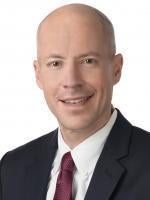Section 523(a)(8) of the Bankruptcy Code excepts from discharge in bankruptcy certain student loans, “unless excepting such debt from discharge under this paragraph would impose an undue hardship.” By its terms, section 523(a)(8) leaves open to statutory interpretation the issue of whether a debtor may obtain relief under the statute if requiring repayment of all “such” debts would impose an undue hardship while requiring repayment of only some “such” debts would not. A recently decided decision from the United States Bankruptcy Court for the District of Kansas provides a vivid illustration of the issue as it follows Tenth Circuit precedent allowing for a “partial discharge” under some circumstances. Ultimately, the bankruptcy court granted a partial discharge to the extent the total amount of all “such” debts exceeded $225,000.
In that case, Loyle v. U.S. Dep’t of Ed., 2022 WL 567724 (Bankr. Kan. Feb 24, 2022), the debtors sought to discharge student loans totaling $435,320. Following a trial, the court weighed the evidence as to whether the debtors faced an undue hardship using the three-prong Brunner[1] test, which required debtors to show:
(1) that the debtor[s] cannot maintain, based on current income and expenses a “minimal” standard of living for [themselves] and [their] dependents if forced to repay the loans; (2) that additional circumstances exist indicating that this state of affairs is likely to persist for a significant portion of the repayment period of the student loans; and (3) that the debtor[s] ha[ve] made good faith efforts to repay the loans.[2]
Although the evidence showed the debtors had monthly disposable income of $1,749, the evidence also showed this amount was less than the monthly interest accruing on the loans. Further, the evidence showed that the debtors were maximizing their income and that their situation was likely to persist for most, if not all, of the 25-year repayment period. Significantly, the debtors were in their forties and were not “seeking to discharge their student loans on the heels of graduation.”[3] And since graduation, they had repaid approximately $45,000. Based on all the evidence, which is set forth in much greater detail in the opinion, the court concluded that repaying their student loans in full would impose an undue hardship on the debtors under section 523(a)(8).
But the court did not discharge all the debtors’ student loans. Instead, the court considered whether “to exercise its equitable powers [under section 105(a)] to grant a partial discharge of the student loan debt” and then concluded that $225,000 of the debt was nondischargeable because the debtors could repay this amount without facing an undue hardship.[4] Finally, the nondischargeable debt was apportioned pro rata, so that a portion of each of the student loans was nondischargeable.
Decisions like Loyle may open the door for borrowers of government[5] backed student loans to discharge at least a portion of student loan debt even where they cannot meet the strict standard of showing an undue hardship for the entirety of the debt.
FOOTNOTES
[1] Brunner v. New York State Higher Educ. Servs. Corp., 831 F.2d 395 (2d Cir. 1987).
[2] Loyle, 2022 WL 567724 at *7.
[3] Id. at *11.
[4] Id. at *13.
[5] In August of 2021, the Bankruptcy Protector wrote about recent decisions that are permitting debtors to discharge private, as opposed to government backed, student loans without the necessity of proving an undue hardship. See “Consensus Builds That Some Private Student Loans Can Be Discharged in Bankruptcy.”




 />i
/>i

